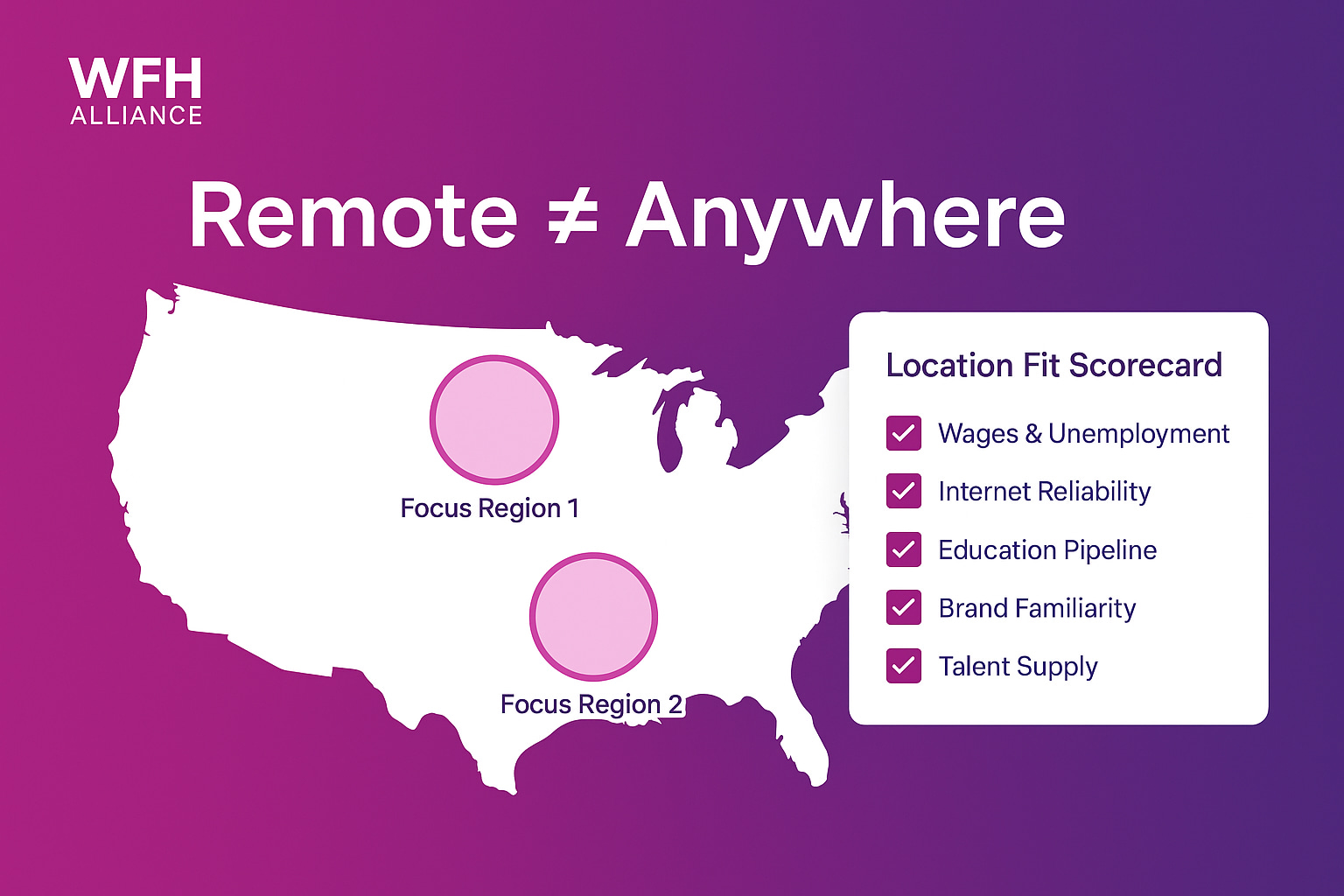Remote ≠ Anywhere: How to Focus Your Geo-Sourcing

Remote ≠ Anywhere: How to Focus Your Geo-Sourcing
Remote doesn’t mean “anywhere.” Focus your regions, sharpen your funnel.
“Remote” doesn't have to mean “everywhere.” If you try to recruit from everywhere, you may dilute your brand and spin your wheels. An alternative path: select 1–3 focus regions that align with your labor goals and double-down.
What to score in each region:
- Wage levels and unemployment rate
- Internet reliability and home-office readiness
- Education pipeline (community colleges, universities)
- Brand familiarity and community reach
- Other unique wants, needs or "fit" criteria for your brand
- Attrition data if you've been hiring from many regions
Evaluating Geographical Locations
Imagine your company has deep ties to the Midwest, where your brand is strong. In the past you've hired in the Minneapolis area but local unemployment rates have dipped to historic lows causing fierce competition and extreme wage pressure. Rather than fighting against that, take a look around and you might discover untapped potential in less saturated markets like small town areas of Wisconsin or Michigan. If you find an area where local employers are unable to offer enough jobs to match the demand of the community, entering the area as a new employer could be a real win-win.
Identifying Competitive Advantages
Different job markets can present you with competitive advantages or risks. A market that initially seems attractive might not be quite as appealing as you learn more about local trends. To stand out, you need to assess your unique offerings and strategic positioning.
What sets you apart as an employer? Do you offer specialized benefits that can only be leveraged in certain parts of the country? Or perhaps your schedules align well for students and you can target mid-sized college towns. Make sure you consider these strengths to align regional sourcing to your unique competitive edge.
Getting Started
Once you pick your regions, act local—even while virtual. Show up at workforce centers and job fairs, partner with community colleges, and tailor your job descriptions to the local reality (e.g., students in college towns vs. caregivers in rural areas).
Set pivot tripwires so you don’t get stuck: if wage pressure jumps or your fill rate dips for 6–8 weeks, re-rank regions and move.
Try this next week: shortlist 4 candidate regions, run a quick scorecard, and rewrite one JD for a college-town audience and one for a rural audience.
